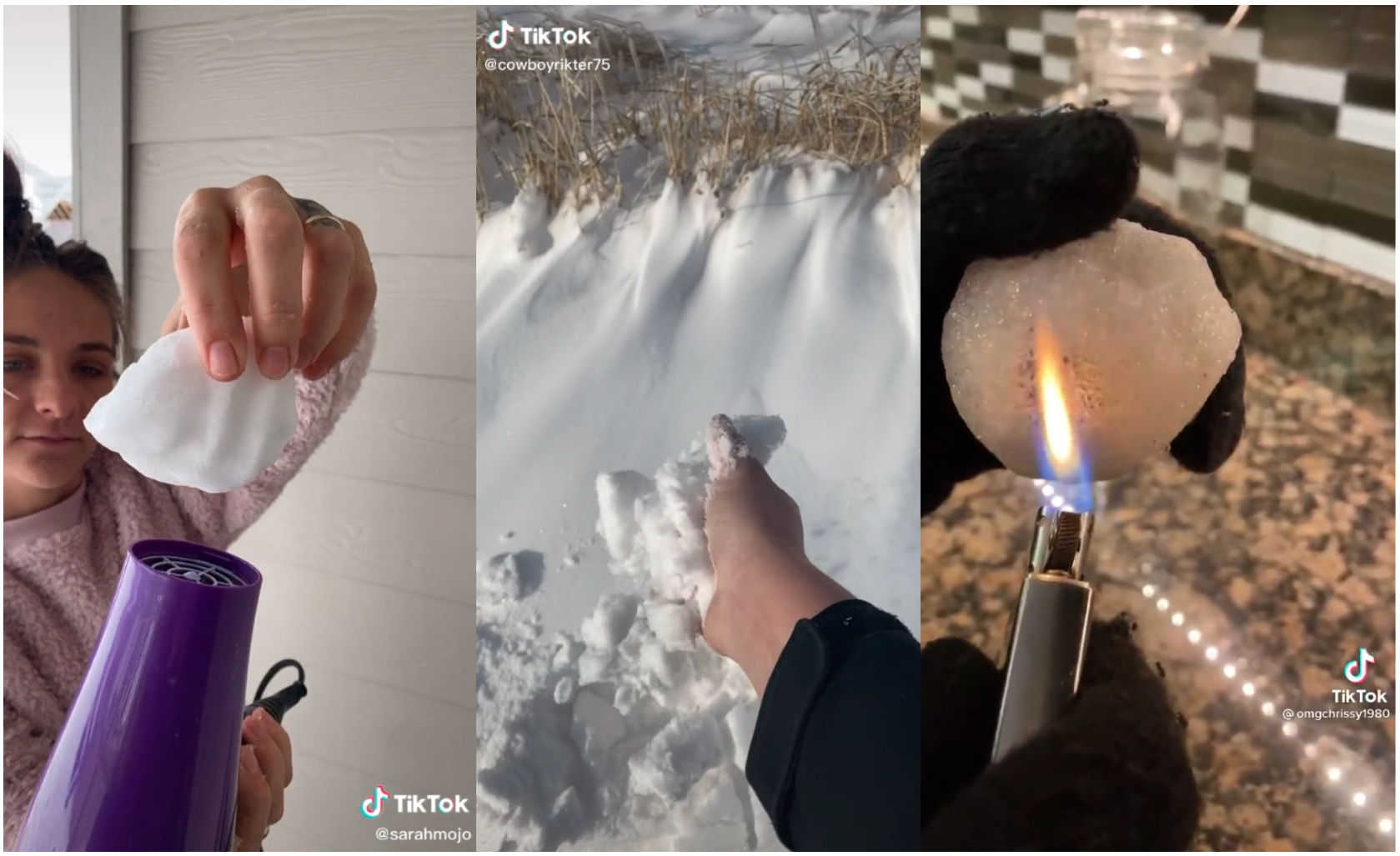
Screenshots/TikTok
- Conspiracy theories about the snow in Texas keep spreading online.
- TikTok videos show people claiming that snow should melt when heated. But it actually turns to gas.
- TikTok videos baselessly questioning whether the snow is real follow a 2014 conspiracy theory.
- Visit Insider’s homepage for more stories.
As power returns to Texan homes after a rare winter storm in the southern state, TikTok is still full of videos spreading the bogus claim that the Texas snow is fake and engineered by the government.
Most of the TikToks show someone burning a snowball with a match. When the flame hits the snow, the snow does not melt, which freaks out TikTok users claiming this indicates the snow is abnormal. In reality, all snow reacts this way in a process called sublimation, where the solid – in this case, snow – turns into a gas. While many of these TikToks take place in Texas, some are also coming from the United Kingdom.
The bizarre weather in Texas, which has been linked to climate change, threatened the state’s electricity infrastructure, forcing power shutoffs that left millions of people in the freezing cold for days.
Misinformation has run rampant since Winter Storm Uri hit Texas. “Fake snow” was a top related-search-query for “Texas snow” on Wednesday, while another false claim alleging Bill Gates played a role in this “fake snow” also ranked high among Texas snow Google searches.
Gates has donated to a Harvard climate project called SCoPEx which is experimenting with ways to dim the sun in an effort to slow the effects of climate change. Gates’ donation to the project has frequently been referenced by climate-change-denying conspiracy theorists, though the real sun-blocking experiment hasn’t even begun.
Similar theories spreading on Facebook and Telegram have also falsely claimed that President Joe Biden somehow caused the storm in Texas.
In the last few days, one user shared several videos that showed her experimenting with the snow. One post in which she uses her blow dryer on a snowball has 285,000 views. "It's not melting," she says.
Many Twitter users shared some "fake snow" TikToks to show how absurd they were.
One video went viral on Twitter but has since been removed from TikTok. In the video, a woman burns a snowball with a lighter. "Thank you Bill Gates for trying to f---ing trick us that this is real snow. You'll see it's not melting, and it's going to burn," she says. The person who posted the TikTok to Twitter said in a subsequent tweet that they did not believe in the video's claims.
—beer rat (@redbullbaby420) February 21, 2021
The #governmentsnow hashtag on TikTok has 1 million views. One video with the hashtag claimed that if Trump were still in office, it would be spring.
As TikTok has rapidly increased in popularity in the last year, they've also struggled to reign in misinformation on the platform. Insider reached out to a TikTok spokesperson for comment and did not immediately hear back. TikTok's community guidelines prevent misinformation "related to emergencies that induces panic."
Yotam Ophir, an assistant professor at the University of Buffalo who researches media persuasion, told Insider that in times of crises like the storm in Texas, people will "fall back on all kinds of biases and shortcuts that they use to make sense of the situation."
Naturally, some of those biases and shortcuts are "political in nature," Ophir said. When someone like Gates, who is frequently the subject of far-right conspiracy theories, becomes a popular scapegoat, that can be extremely appealing to people looking for answers.
Like most conspiracy theories, which are cyclical in nature, this one isn't new. The claim also circulated in January 2014, when the southern US had a rare snowstorm. News outlets debunked the claim, with a CBS affiliate station in Richmond explaining sublimation in a YouTube video that has more than 100,000 views. Several of the top comments on the video were from 2021, with some users still questioning the science and calling the video "bs."
